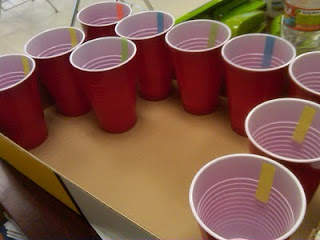2nd- 11th Grade Test Prep (ACT)
3rd- 8th Grade Algebra I
4th- Plan
5th- Algebra 1
6th- Geometry Lab
7th- Geometry
8th- Algebra Lab
I'm super pumped about this schedule!
Social Development is basically advisory or what I like to call 'mothering'. That's my heart. I would rather do that all day every day if I could! The plan for that is on Monday- Character Education, Tuesday- Sustained Silent Reading for everyone (including the teacher!), Wednesday- Test Prep, Thursday- Study Hall, Friday- Team Building/Service Projects. How fun is that?
The test prep for 11th grade is broken up among four of us: math, reading, english, science. So we will have a group of kids for 4-5 weeks and then they will rotate to a different content area. I am in love with this because it's not that much of an extra prep, kind of a mini prep. The plan is that Monday through Wednesday is test prep (not sure what that will consist of yet) then Thursday is a study hall and Friday again with the team building and service projects.
The Algebra and Geometry labs will probably be the hardest thing for me to deal with. Our instructional team is starting to plan assessments together and after that we want to move on to planning the curriculum/activities for those lab classes. We know for sure we want to incorporate probability, statistics, and measurement since those are the first things to get cut out of the normal curriculum. My heart for this class is to meet with students individually and work on skills they haven't mastered yet. We also would like to use ALEKS (or I'm leaning toward TenMarks) or some computer program a couple days of week for students to work on at their own pace. I think the first thing to do is plan a routine like we have for the social development and test prep classes. That way students and teachers know what to expect on a daily/weekly basis. And makes planning a lot simpler.
Other changes to our schedule is that the school day is extended from 3:06 to 3:20. Teachers had to stay until 3:20 anyway so now we can leave as soon as the bell rings.
In the morning, we have to be here by 7:45 and class starts at 8:03. The new schedule gives us team meeting time (vertical, instructional, student support, leadership, etc) from 7:45 to 8:15 every day. As far as teachers are concerned, we have to be there the same amount of time. We went from seven to eight periods so I'm sure some teachers have extra preps and are not happy about that! But, so far, I haven't heard any complaints.
Our lunch period is now common between middle school and high school. Remember, smallllll school. While that may cause some issues, it opens up more options for middle school students to take as 'exploratory' classes.
Another change is that all juniors/seniors will have gym first hour and all freshmen/sophomores will have gym second hour. We're kind of going on a fitness initiative. More aerobics and such because research shows that getting those endorphins pumping helps students think better. The FACS teacher will be pulling students during their gym time to create individual nutrition plans as well.
All in all, I have to say I am surprised and impressed that my administration came up with this. Of course I'm biased since I like my schedule, but I do think this is a good way to fulfill a lot of different needs that our school currently has.
The attitude and atmosphere is slowly changing and becoming more positive. Teachers have been coming up with cross-curriculum projects and new ideas. Since I've spent a lot of time complaining, I thought I would share some positive things now.
- The elementary has started an intramural basketball team for boys and girls.
- We're brainstorming ways to update, rearrange, and change the atmosphere of the library to a place people want to be.
- The history and English department are doing a joint study of the Holocaust that culminates in a trip to a Holocaust museum with a tour given by a Holocaust survivor.
- The band teacher wants to design his own band uniform with measurement help from algebra/geo students, measurement predictions from the statistics class, design/color ideas from the art classes, and mock-up patterns sewn by the FACS classes.
- I'm stealing a project from Mimi where students design their own logo and then shrink or enlarge it (to practice percents) and with the help of the art teacher, we will blow it up or shrink it and use the printing press to create an actual print of the logo.
- The fine arts department is planning a Math Olympics day where students sign up and compete for math related activities such as counting back change, doing mental math, telling time from an analog clock, etc.
- We will be using Career Cruising with students as a way to kind of build a portfolio of sorts for college/careers after school as well as a way of setting goals and recording student accomplishments.
- We've formed a Communications Committee to work on communication between administrators and teachers, teachers and parents, etc.




